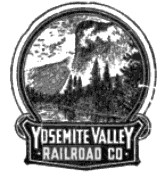The Detroit, Toledo and Ironton Railroad operated from 1905 to 1983 between its namesake cities of Detroit, Michigan, and Ironton, Ohio, via Toledo. At the end of 1970, it operated 478 miles of road on 762 miles of track; that year it carried 1,244 million ton-miles of revenue freight.

The Southern Railway was a class 1 railroad based in the Southern United States between 1894 and 1982, when it merged with the Norfolk & Western to form Norfolk Southern. The railroad was the product of nearly 150 predecessor lines that were combined, reorganized and recombined beginning in the 1830s, formally becoming the Southern Railway in 1894.

The Richmond, Fredericksburg, and Potomac Railroad was a railroad connecting Richmond, Virginia, to Washington, D.C. The track is now the RF&P Subdivision of the CSX Transportation system; the original corporation is no longer a railroad company.
The Clinchfield Railroad was an operating and holding company for the Carolina, Clinchfield and Ohio Railway. The line ran from the coalfields of Virginia and Elkhorn City, Kentucky, to the textile mills of South Carolina. The 35-mile segment from Dante, Virginia, to Elkhorn City, opening up the coal lands north of Sandy Ridge Mountains and forming a connection with the Chesapeake and Ohio Railway at Elkhorn City, was completed in 1915.

The Arkansas, Louisiana and Mississippi Railroad is a 52.9-mile (85.1 km) short-line railroad in northern Louisiana and southern Arkansas. Opened in 1908, it has undergone several corporate reorganizations, but has remained independent of larger carriers. In 2004, paper producer Georgia-Pacific sold the company to shortline operator Genesee & Wyoming Inc. Traffic generally consists of lumber, paper, forest products, and chemicals.

Transportation in the Commonwealth of Virginia is by land, sea and air. Virginia's extensive network of highways and railroads were developed and built over a period almost 400 years, beginning almost immediately after the founding of Jamestown in 1607, and often incorporating old established trails of the Native Americans.
The East Tennessee & Western North Carolina Railroad, affectionately called the "Tweetsie" as a verbal acronym of its initials (ET&WNC) but also in reference to the sound of its steam whistles, was a primarily 3 ft narrow gauge railroad established in 1866 for the purpose of serving the mines at Cranberry, North Carolina.

The Virginia Creeper Trail is a 35-mile (56 km) multi-purpose rail trail. Located in southwestern Virginia, the trail runs from Abingdon to Whitetop, Virginia, near Mount Rogers National Recreation Area and the North Carolina state line.
The Virginia–Carolina Railway was an interstate railroad in southwestern Virginia and northwestern North Carolina. It ran from Abingdon in Washington County, Virginia to Todd in Ashe County, North Carolina. The line charted a complicated course through the mountains of the area, crossing the Blue Ridge not far from Mount Rogers.

The Laurel Fork Railway was a small, standard-gauge logging railroad that operated entirely in Carter County, Tennessee from 1912 to 1927. Built by the Pittsburgh Lumber Company to serve a double-band sawmill at Braemar, in present-day Hampton, Tennessee.
The Smoky Mountain Railroad was a standard gauge class-III shortline that operated from Knoxville, Tennessee, to Sevierville, Tennessee, from 1909 until 1961.
The following is a brief history of the North American rail system, mainly through major changes to Class I railroads, the largest class by operating revenue.

The Appalachian region has always had to allocate much resources and time into transportation due to the region's notable and unique geography. Mountainous terrain and commonly occurring adverse weather effects such as heavy fog and snowfall made roads hazardous and taxing on the traveling vehicles. Initially, European settlers found gaps in the mountains, among them the Cumberland Gap and the Wilderness Road. Another notable challenge of Appalachian travel is the political elements of constructing transportation routes. Most travel systems are funded by municipalities, but since The Appalachian area has several different states it can be difficult for the various governments to agree on how to work on transportation. The most influential forms of travel in the Appalachian region are based on water trading routes, roads and railroads.

The Yosemite Valley Railroad (YVRR) was a short-line railroad operating from 1907 to 1945 in the state of California, mostly following the Merced River from Merced to Yosemite National Park, carrying a mixture of passenger and freight traffic. Contrary to the name of the railroad, rail service did not extend to Yosemite Valley itself, but rather ended at the park boundary as the construction of railroads is prohibited in the National Parks. Passengers would disembark at the park boundary in El Portal, California and either stay at the Hotel Del Portal or take a stage coach, and starting in 1913 a motor coach, to Yosemite Valley itself. With closure of the Yosemite Sugar Pine Lumber Company in 1942 and the sale of the Yosemite Portland Cement Company to the Henry J. Kaiser Company and subsequent suspension of all operations in 1944 led to a loss of most of the freight track on the railroad. This in addition to the increased competition for passengers from use along the Yosemite All-Year Highway, both commercial and private, and the substantial decrease of recreational passenger traffic because of World War II led to the downfall of the railroad. The railroad asked the Interstate Commerce Commission for permission to abandon operations on October 25, 1944. The last regularly scheduled train ran on August 24, 1945.

The St. Louis Southwestern Railway of Texas, operated the lines of its parent company, the St. Louis Southwestern Railway within the state of Texas. The St. Louis Southwestern, known by its nickname of "The Cotton Belt Route" or simply the Cotton Belt, was organized on January 12, 1891, although it had its origins in a series of short rail lines founded in 1870 in Tyler, Texas, that connected northeastern Texas to Arkansas and southeastern Missouri. Construction of the original Tyler Tap Railroad began in the summer of 1875. The St. Louis Southwestern of Texas merged with the property of the Tyler Southeastern Railway on October 6, 1899. The property of the Texas and Louisiana Railway was acquired and merged on July 2, 1903.

The Potomac, Fredericksburg, and Piedmont Railroad (PF&P) was a 3 ft narrow gauge short-line railroad in central Virginia that operated between Fredericksburg and Orange, Virginia. It operated until 1926, when its track was sold. A one-mile portion of the former PF&P line continued to be operated as the Virginia Central Railway until the early 1980s. The track has since been removed.
Crandull is an unincorporated community in Johnson County, Tennessee, United States. Crandull is located on Tennessee State Route 133 7.1 miles (11.4 km) northwest of Mountain City.

State Route 133 is a state route in northeastern Tennessee in Johnson County. It begins at Shady Valley and runs northward for about 11 miles (18 km) to the Tennessee–Virginia state border.











